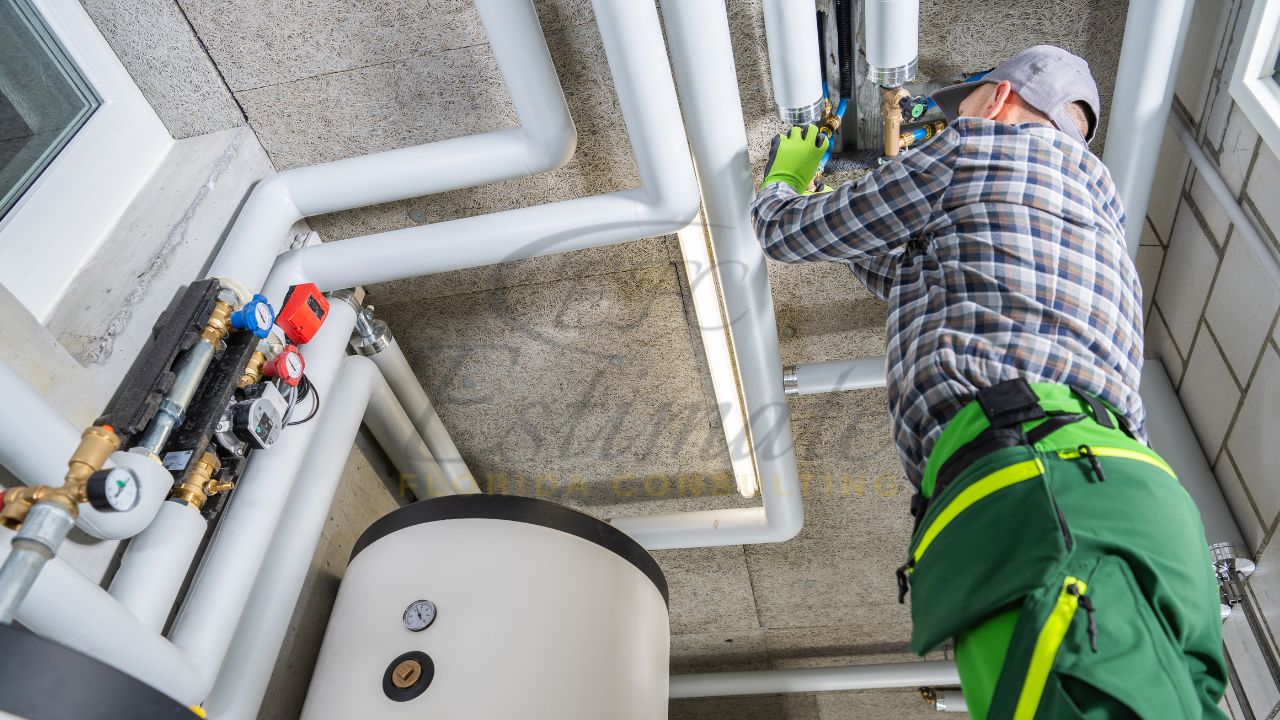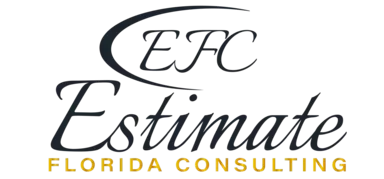- Homepage
- Plumbing
How to Turn Your Plumbing Website into a 24/7 Lead Machine?
Leading provider of web development services
For plumbing contractors, a website is a critical asset for attracting clients and growing your business. In an industry where clients need quick solutions for issues like clogged drains, burst pipes, or sewer line problems, a well-optimized website can work 24/7 to capture leads, showcase your expertise, and convert visitors into paying customers.
By implementing strategic features and marketing tactics, you can transform your plumbing contractor website into a lead-generating machine that drives consistent bookings. Here’s how to make it happen.

1. Optimize for Local SEO
Local search engine optimization (SEO) ensures your website ranks high when potential clients search for plumbing services in your area, driving targeted traffic and leads.
Why It Generates Leads: Over 80% of consumers search for local services like “plumber near me” or “emergency plumber [city],” and a well-optimized site captures these high-intent searches.
How to Do It:
- Incorporate Local Keywords: Use terms like “plumbing services in [city],” “local plumber,” or “pipe repairs [city]” in your homepage, service pages, and meta descriptions.
- Google My Business Integration: Claim and optimize your Google My Business profile with your address, phone number, service hours, and service areas to boost local rankings.
- Local Citations: List your business on directories like Yelp, Angi, and HomeAdvisor, linking back to your website for added credibility.
Example: A plumber in Denver optimizes their site for “Denver emergency plumbing services,” ranking on Google’s first page and generating 20-30 leads monthly.
Consequence of Skipping This: Without local SEO, your website may not appear in local searches, losing leads to competitors with better visibility.
Cost Estimate: Local SEO setup costs $500-$2,000 initially but can increase inquiries by 20-40%.
Pro Tip: Add a “Service Areas” page listing specific cities or zip codes you serve to enhance local relevance.

2. Create Compelling Service Pages
Detailed, service-specific pages showcase your expertise and attract clients searching for solutions to specific plumbing issues.
Why It Generates Leads: Clients often search for targeted services like “water heater installation” or “sewer line repair,” and dedicated pages increase your chances of ranking for these terms.
How to Do It:
- Individual Service Pages: Create pages for each service, such as drain cleaning, backflow prevention, or commercial plumbing, using LSI keywords like “plumbing maintenance” or “pipe corrosion repair.”
- Detailed Content: Include descriptions of the service, common issues, and your process, along with photos or videos of past work.
- Call-to-Action (CTA): Add clear CTAs like “Request a Quote” or “Schedule Service” to prompt action.
Example: A page on “emergency pipe repairs” with a strong CTA converts a homeowner searching for a burst pipe fix into a $1,500 job.
Consequence of Skipping This: Generic or missing service pages reduce your visibility for specific searches, lowering lead volume.
Cost Estimate: Developing service pages costs $200-$1,000 but can boost conversions by 10-20%.
Pro Tip: Use customer pain points (e.g., “high water bills” or “sewer smells”) in page titles to attract relevant searches.
Professional Web Developer For Your Website?
3. Implement Lead Capture Forms
Online forms make it easy for visitors to request quotes or schedule services, capturing leads even outside business hours.
Why It Generates Leads: Forms allow clients to submit inquiries at their convenience, increasing the likelihood of contact during emergencies like sump pump failure or water heater problems.
How to Do It:
- Strategically Placed Forms: Add forms on the homepage, service pages, and a dedicated “Contact Us” page, asking for name, phone, email, and job details.
- Quick Response System: Set up email or CRM notifications to respond to inquiries within hours, especially for emergency plumbing services.
- Incentives: Offer free estimates or discounts (e.g., “$50 off drain cleaning”) to encourage form submissions.
Example: A contact form on your “Emergency Services” page captures a late-night inquiry, leading to a $2,000 sewer line repair job.
Consequence of Skipping This: Without forms, you miss after-hours leads, losing jobs to competitors with 24/7 capture systems.
Cost Estimate: Adding forms costs $100-$500, increasing lead capture by 15-30%.
Pro Tip: Use a CRM like HubSpot or Zoho to organize and follow up on leads efficiently.
Get 5 New Projects in the Next 7 Days With Our System
4. Add Click-to-Call and Live Chat Features
Making it easy for clients to contact you instantly, especially on mobile devices, boosts conversions and captures urgent leads.
Why It Generates Leads: Clients with emergencies like frozen pipes or sewer backups want immediate contact, and click-to-call or live chat features facilitate quick connections.
How to Do It:
- Click-to-Call Buttons: Include a prominent phone number with a clickable link for mobile users to call directly.
- Live Chat Integration: Use tools like LiveChat or Tawk.to to offer real-time support, answering questions about services or pricing.
- 24/7 Availability: Partner with a call answering service for after-hours inquiries to ensure no lead is missed.
Example: A click-to-call button on your mobile site secures a $1,200 drain cleaning job from a homeowner searching during a late-night clog.

Consequence of Skipping This: Hard-to-reach contractors lose urgent leads to competitors with instant contact options.
Cost Estimate: Live chat setup costs $50-$300/month, boosting conversions by 10-25%.
Pro Tip: Test your click-to-call feature on multiple devices to ensure seamless functionality.
5. Showcase Testimonials and Case Studies
Displaying customer reviews and success stories builds trust, encouraging visitors to choose your services.
Why It Generates Leads: Over 90% of consumers read reviews before hiring a plumber, and positive feedback can tip the scales in your favor.
How to Do It:
- Testimonial Section: Feature detailed reviews from clients praising your work on issues like low water pressure or mold prevention.
- Case Studies: Highlight specific projects, such as fixing a commercial property’s backflow issues, with before-and-after photos.
- Third-Party Reviews: Integrate Google or Yelp reviews with star ratings to add credibility.
Example: A case study on resolving a restaurant’s grease trap issues attracts a similar business, securing a $5,000 contract.
Consequence of Skipping This: Without social proof, clients may doubt your reliability, choosing competitors with visible testimonials.
Cost Estimate: Adding a testimonial section costs $100-$500 but can increase trust and conversions by 15-20%.
Pro Tip: Ask satisfied clients to leave reviews on Google My Business and feature them prominently on your homepage.
Grow Your Website’s Authority — Get Started with SEO Link Building Now!
6. Offer Transparent Pricing or Quote Tools
Providing clear pricing or online quote tools reassures clients and streamlines the decision-making process.
Why It Generates Leads: Transparent pricing reduces hesitation, as clients fear hidden costs for services like water heater maintenance or pipe repairs.
How to Do It:
- Pricing Page: List starting prices for common services (e.g., $100-$300 for drain cleaning, $1,000-$4,000 for water heater installation) with disclaimers about variables.
- Quote Forms: Allow clients to input project details for personalized estimates, capturing lead information.
- Cost Calculators: Offer interactive tools for rough estimates based on job type or property size.
Example: A quote form for a sewer line repair generates a $3,000 job from a homeowner who appreciates the upfront pricing.
Consequence of Skipping This: Lack of pricing clarity can deter 40% of clients, who may assume higher costs or unreliability.
Cost Estimate: Developing pricing tools costs $200-$1,000, increasing conversions by 10-30%.
Pro Tip: Include a note that final pricing requires an on-site assessment to manage expectations.
7. Publish Educational Content
Blog posts, FAQs, and guides position you as an expert, attracting clients and encouraging them to engage with your services.
Why It Generates Leads: Educational content addressing common concerns like “how to prevent high water bills” or “signs of pipe corrosion” draws in clients searching for solutions.
How to Do It:
- Blog Posts: Write articles on topics like “Preventing Frozen Pipes” or “Why Your Drains Are Clogged,” using LSI keywords for SEO.
- FAQs: Answer common questions, such as “What causes sewer smells?” or “How often should I maintain my septic tank?”
- Videos or Guides: Create tutorials on simple DIY fixes or maintenance tips, linking to your services for complex issues.
Example: A blog post on “Avoiding Sump Pump Failure” attracts a homeowner who books a $1,500 pump maintenance job.

Consequence of Skipping This: Without content, you miss opportunities to rank for informational searches, reducing traffic and leads.
Cost Estimate: Blog or FAQ development costs $200-$1,500 but can drive 10-20% more traffic.
Pro Tip: Publish new content monthly to keep your site fresh and improve SEO rankings.
Additional Strategies to Maximize Leads
- Fast Loading Times: Optimize images and code for load times under 3 seconds, as slow sites deter 50% of visitors.
- Social Media Integration: Link to your social profiles and share customer reviews or project photos, driving traffic to your site.
- Analytics Tracking: Use Google Analytics to monitor visitor behavior and refine your site for better conversions.
Conclusion: Transform Your Website into a Lead-Generating Powerhouse
Turning your plumbing website into a 24/7 lead machine requires strategic features like local SEO, compelling service pages, lead capture forms, and educational content. By optimizing for client conversion, showcasing testimonials, and offering transparent pricing, you can attract more inquiries for services like emergency plumbing, pipe repairs, or commercial plumbing projects. A website costing $1,000-$5,000 can generate thousands in monthly revenue by capturing leads around the clock.
For plumbing contractors, a lead-generating website is a competitive edge in a digital-first world. Work with a skilled web designer, implement these strategies, and watch your business grow as clients choose you for your accessibility, expertise, and reliability. Start optimizing your website today to unlock its full potential for driving plumbing lead generation.
Frequently Asked Question
Local SEO helps your website rank higher in searches like “plumber near me” or “emergency plumber [city],” capturing high-intent clients in your service area. By optimizing for local keywords, integrating Google My Business, and listing on directories like Yelp, you can drive targeted traffic and generate 20-40% more inquiries.
Create dedicated pages for each service, such as drain cleaning, water heater installation, sewer line repair, or backflow prevention. Include detailed descriptions, photos or videos, and strong calls-to-action (e.g., “Request a Quote”) to attract clients searching for specific solutions and boost conversions by 10-20%.
Lead capture forms allow visitors to request quotes or schedule services anytime, even after hours, capturing leads for emergencies like sump pump failures. By adding forms on key pages and offering incentives like free estimates, you can increase lead capture by 15-30%.
Testimonials and case studies build trust, as over 90% of consumers read reviews before hiring a plumber. Featuring client reviews and project success stories, like fixing a commercial grease trap, can increase conversions by 15-20% by showcasing your reliability and expertise.
Blog posts and FAQs on topics like “preventing frozen pipes” or “signs of pipe corrosion” attract clients searching for solutions, positioning you as an expert. Regularly publishing content can drive 10-20% more traffic and improve SEO rankings, leading to more inquiries.

